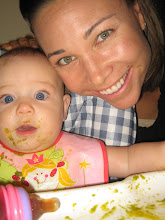When creating my
tagroll for my blog, I visited and tagged numerous educational sites. These sites had a range of materials that will be useful in my classroom. The content range of my
tagroll covers numerous content areas and provides a new medium for teaching and providing information to my students.
The National Archives website is a great way for students to view primary resources in the classroom. They can actually view a real picture of the Constitution and Declaration of Independence. My 1st graders were studying National symbols and I went to the National Archives website and was able to show them various American symbols. Being an election year, I enjoyed viewing the political cartoons depicting Presidents and past elections.
Becoming a culturally competent educator is of the utmost importance, especially living in Southern California. We need to be sensitive and embrace the different cultures of our students. From the
NEA website, I chose 3 areas that fit into my teaching style:
1. Ensure that your school has a mission statement that commits to cultural competence as an integral component of all its activities. The cultural competence committee should be involved in developing this statement. My school is lacking a cultural competence committee. I think the students and their families would greatly benefit from a committee like this. My school's mission statement is also lacking language addressing the cultural needs of students.
2. Build and use a network of "natural helpers" at school and in the community as well as "experts" who have knowledge of the culturally, linguistically, racially, and ethnically diverse groups served by your school. We have great families at my school. There are several parents at my school who help relay information to our English Language Learners and their parents. Also, we have a new custodian who speaks Spanish and loves to get involved and help wherever she is needed.
3. Determine the diverse groups served by your school. Consider cultural, linguistic, racial, and ethnic diversity. Find out the degree to which families and students in these groups are accessing available school services. We have an
ELD coordinator who coordinates the testing schedule for our
ELLs. Part of this coordinator's job could be to inform parents of the services available to them, and then follow up with the individual families.
Kids Click is a great website that addresses various reading levels. I teach
SDC 1-3 and I have ranging reading and ability levels in my classroom. The ABC
Toon Center is a great link that allows students to go to a carnival where they play various learning games. My students are always engaged when they are playing (learning) games on the computer.
Kathy Schrock's Guide for Educators is an amazing site! It has everything an educator could possibly need. Being a Special Education Teacher, I found her page for Special Ed, Counseling & School Psychology most useful. There were numerous links for SPED teachers on topics ranging from sign
language to
assistive technology to disability resources, etc. I used this site and incorporated numerous clip art for my Classroom Newsletter.
The Theory of Multiple Intelligences states that intelligence cannot be measured by an IQ test, but that there are many different kinds of intelligence. I have studied the 8 multiple intelligences in my credential program, but I was surprised to learn that there are actually nine. There is one more intelligence that Gardner is researching; existential intelligence. This intelligence focuses on the importance of the sense of who we are in the world, and that all of us come to terms with this idea in some way. Gardner is making room for this intelligence among the others because it is such a fundamental aspect of being human, and some people are quite adept at understanding themselves in relation to a sense of the spiritual or something beyond ourselves.
Teaching Tolerance: My lesson is about teaching the importance of having respect for one another and not naming calling. Being a primary grade teacher, I deal with name calling issues quite often. Reading stories (social stories) is a great way for students with special needs to identify appropriate social interactions and to develop social skills. In the story
Dreamtime, the
animals get in a quarrel and everyone starts name calling. The day and the night get so upset, that the sun hides behind the clouds and the night starts to hurl lightening bolts at the Earth to make the animals stop. So
whenever there is lightening and thunder, someone is using unkind words and name calling. I would use this story during my social skills/social story time.
EdChange Equity and Diversity Quiz: I got 14/15 questions wrong on this quiz! I could not believe that the US and UK rank lowest in the UNICEF study that rated the treatment of children in the 23 wealthiest countries. That is a scary thought considering the US is the leader of the free world. Being a new mom, I found the statistic that African American women are 4x more likely to die in childbirth than white women due to the lack of prenatal care. This statistic makes me sad. We need health care available to all children and Americans no matter the color of your skin.
Netiquette is an important skill that teachers need to teach to students. Technology is moving forward and it is important that our students know how to communicate appropriately with/in media and technology. :-D (I'm laughing).


